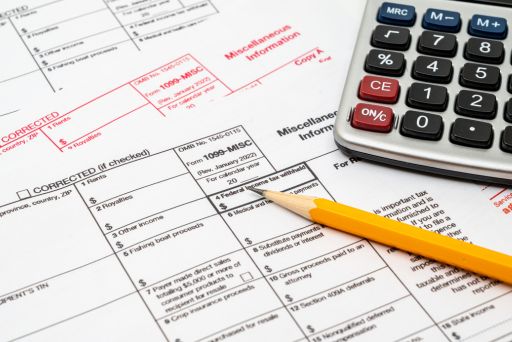10 Quick Steps to Catch Up on Last Year’s Bookkeeping for your Business
Let’s assume you haven’t done your small business bookkeeping in…a while. If it’s been several months, you’ve probably got some major catch up bookkeeping to do. We’ve compiled a quick to-do list to catch yourself up before last year’s taxes are due.
- Start with your receipts. As a small business owner, your receipts may come in many forms. You’ll need to look for receipts in the form of customer invoices that have or have not been paid, any business expenses put on a credit card, business expenses paid in cash, vehicle expenses, vendor accounts, monthly payments, and so on. Don’t try to reconcile your bank account as you go; you’ll have better luck if you gather all receipts first and reconcile later.
- Grab those bank statements. Print off the month’s of bookkeeping you need to catch up on and start comparing with your receipts. This will help you identify any errors on your part, find deductions you missed, and catch any mistakes in your bank records. Your end balance in your bank account should match your balance in your bookkeeping records. You’re better off to have your bank accounts reconciled before heading to your accountant.
- Separate business and personal expenses. If you’re not using a separate business bank account, things can get messy. You’ll need to go through every transaction and determine if the expense was personal or professional. Steps 1 and 2 above should help with this part. There will likely be some overlap in these expenses.
- Calculate portions of personal expenses that can be used as deductions. If you’re maintaining a home office, some of your personal expenses can be deducted such as a portion of your mortgage, electric bill, and internet. If you use your phone or car for business (who doesn’t?) portions of those bills are deductible as well, depending on the percentage of use.
- Create digital records as you go–and from now on. You’ll need to keep all your records for at least 7 years, as that is how long the IRS can audit your company after a tax return has been filed. Fortunately, they accept digital records so snapping quick photos of receipts as you go will save you a lot of time and space. Create an organized system on your computer of yearly folders, with monthly folders within those to store digital copies of receipts.
- Collect and send 1099-Miscs, W9s, and W2s. If you paid a contractor more than $600 last year, you’ll need to send them a W9 and Form 1099. (Unless you paid them via PayPal or credit card; more on that here.) A W9 requests a tax payers information, so it’s best to send them that form right when they start working for you. A Form 1099 is used to report how much you paid them during the year. Your company employees will need W2s which state how much they earned in a year.
- Factor your net profit and your total expenses for the year. Review your income and subtract all expenses (deductions, payroll, business space rental, etc.) Determine your taxable income for the year.
- Browse for common small business deductions you may have missed. You may be missing deductions and not even know it! Learn about commonly missed business deductions here, here, and here.
- Hire an accountant. If you’re feeling overwhelmed and confused, call in a professional. (You may need one even if you’re not!) An accountant can help you reconcile your accounts, determine missed deductions, and make sure you’re paying the right amount of taxes.
- Don’t let it happen again! Everyone gets behind sometimes, but creating an organized small business bookkeeping system will help you avoid costly mistakes in the future. Whether you hire a bookkeeper, use Quickbooks or your own Excel spreadsheet, or have your grandma do your taxes, be sure to set aside time each week to take care of these tasks. Staying on top of bookkeeping now is the best way to save yourself time during tax season.

Frequently Asked Questions:
What should I prioritize if my small business bookkeeping is behind?
Start by organizing your receipts and comparing them with your bank statements to reconcile transactions accurately.
How can I manage personal and business expenses effectively?
Separate your personal and professional expenses meticulously. Reviewing receipts and bank statements will aid in distinguishing between the two.
Are there specific deductions I can claim for my small business?
Yes, deductions include expenses for home offices, phone or car usage for business, and more. Consult with a tax professional for personalized advice.
How should I handle tax forms for contractors and employees?
Send W9s and 1099-Miscs to contractors paid over $600, and W2s to employees. Ensure accurate records and timely submissions to avoid penalties.
When is it advisable to hire an accountant for small business bookkeeping?
If overwhelmed or uncertain, seeking professional help is wise. An accountant can streamline processes, identify missed deductions, and ensure compliance with tax laws.
Interested in Learning More?
Schedule a free consultation with our team!




 The deadline for mailing 1099s to contractors for your small business is February 2nd this year, a few days later than the usual January 31st deadline. Before you prepare all of those forms just yet, you’ll want to read up on the regulations concerning contractors paid by credit card or PayPal.
The deadline for mailing 1099s to contractors for your small business is February 2nd this year, a few days later than the usual January 31st deadline. Before you prepare all of those forms just yet, you’ll want to read up on the regulations concerning contractors paid by credit card or PayPal.

















